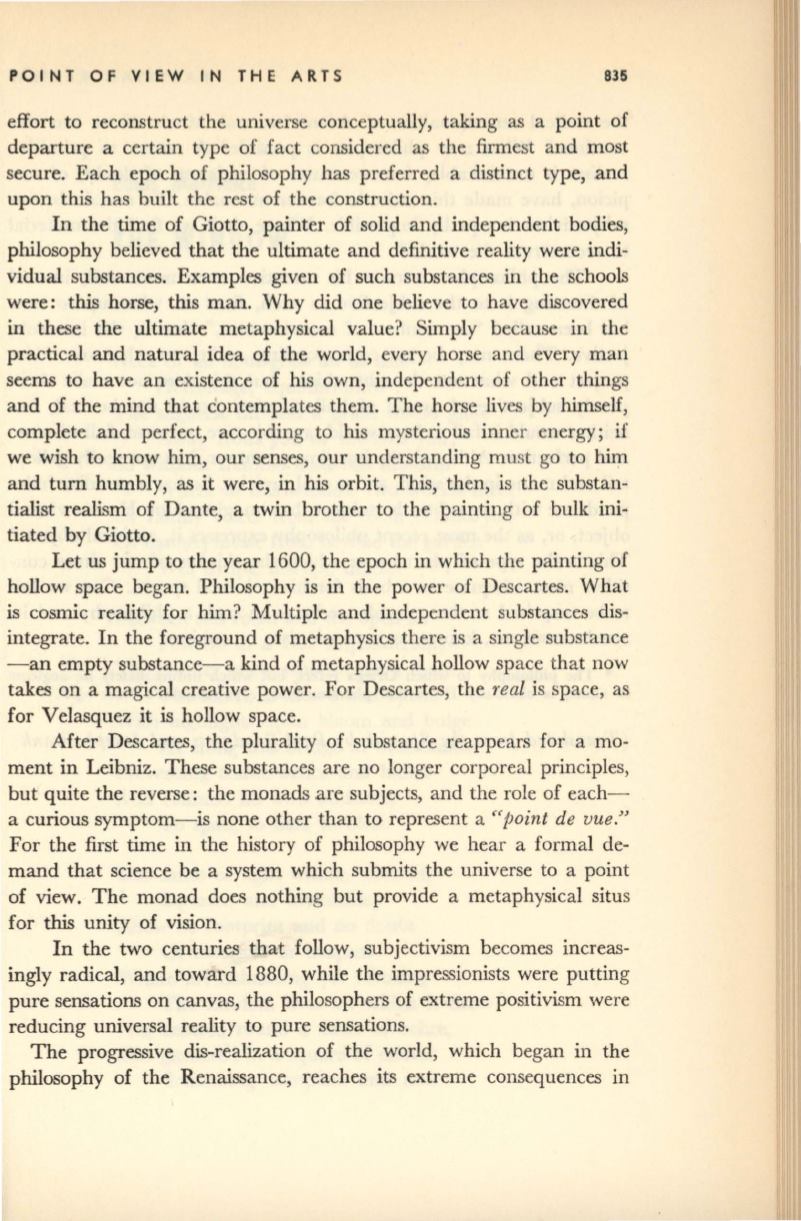
POINT OF VIEW IN THE ARTS
835
effort to reconstruct the universe conceptually, taking as a point of
departure a certain type of fact considered as the firmest and most
secure. Each epoch of philosophy has preferred a distinct type, and
upon this has built the rest of the construction.
In
the time of Giotto, painter of solid and independent bodies,
philosophy believed that the ultimate and definitive reality were indi–
vidual substances. Examples given of such substances in the schools
were:
this
horse, this man. Why did one believe to have discovered
in these the ultimate metaphysical value? Simply because in the
practical and natural idea of the world, every horse and every man
seems to have an existence of his own, independent of other things
and of the mind that contemplates them. The horse lives by himself,
complete and perfect, according to his mysterious inner energy; if
we wish to know him, our senses, our understanding must go to him
and tum humbly, as it were, in his orbit. This, then, is the substan–
tialist realism of Dante, a twin brother to the painting of bulk ini–
tiated by Giotto.
Let us jump to the year 1600, the epoch in which the painting of
hollow space began. Philosophy is in the power of Descartes. What
is cosmic reality for him? Multiple and independent substances dis–
integrate.
In
the foreground of metaphysics there is a single substance
-an empty substance-a kind of metaphysical hollow space that now
takes on a magical creative power. For Descartes, the
real
is space, as
for Velasquez it is hollow space.
After Descartes, the plurality of substance reappears for a mo–
ment in Leibniz. These substances are no longer corporeal principles,
but quite the reverse: the monads are subjects, and the role of each–
a curious symptom-is none other than to represent a
repaint de vue."
For the first time in the history of philosophy we hear a formal de–
mand that science be a system which submits the universe to a point
of view. The monad does nothing but provide a metaphysical situs
for
this
unity of vision.
In
the two centuries that follow, subjectivism becomes increas–
ingly radical, and toward 1880, while the impressionists were putting
pure sensations on canvas, the philosophers of extreme positivism were
reducing universal reality to pure sensations.
The progressive dis-realization of the world, which began in the
philosophy of the Renaissance, reaches its extreme consequences in


